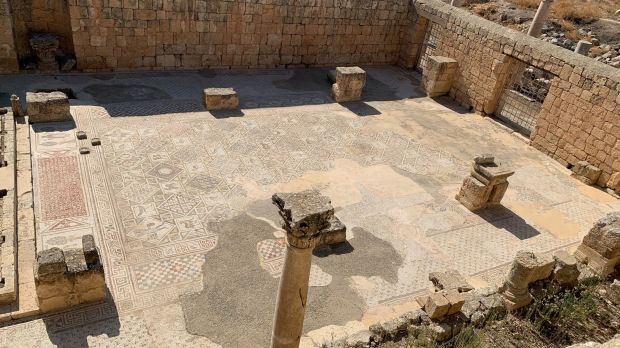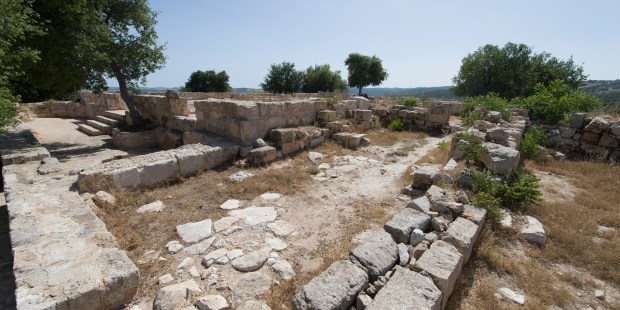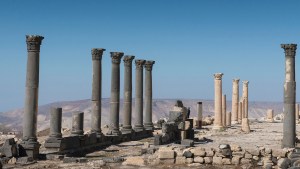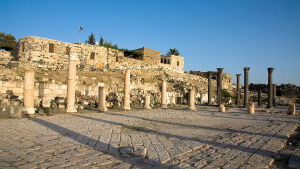The Transfiguration of Jesus is one of the five major milestones in the gospel narrative of the life of Jesus —the other four being his Baptism, the Crucifixion, the Resurrection, and the Ascension. According to the Gospels, this is the event in which Jesus appears radiant in glory upon the mountain accompanied by Moses and the prophet Elijah. The scene is minutely described in the Synoptic Gospels (Matthew, Mark, and Luke), mentioned in the second Epistle of Peter and, according to some, discreetly alluded to in John’s Gospel (“We have seen his glory, the glory of the one and only Son”), John being one of the three apostles who witnessed, with Peter and James, this miracle.
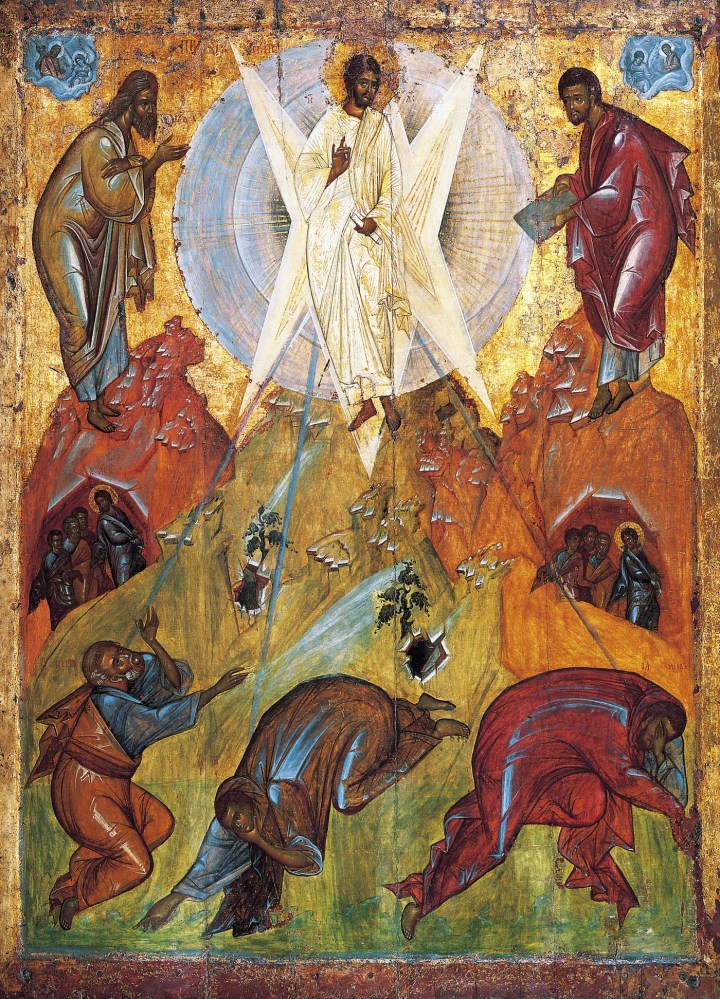
There is much discussion as to where this event took place, as the New Testament says nothing about where it occurred. Some early sources, like Origen, point at Mount Tabor. More contemporary scholars say Mount Hermon. Be that as it may, a question remains: Why are Moses and Elijah standing next to Jesus?
Moses’ presence is relatively easy to understand. To begin with, the Transfiguration takes place right after Jesus feeds the hungry multitude, multiplying the loaves and fishes. The miracle is akin to that of the people fed with manna, while led by Moses as they walked across the desert. Also, the Book of Exodus (34:29-35) tells us that when Moses came down from the mountain with the Ten Commandments “his face was radiant,” just as Jesus’ face “shone like the sun” during his Transfiguration. These parallels would have surely been deeply and evidently meaningful not only for the authors of the gospels, but also for their early readers. But what about Elijah?
Tell Mar Elias and Elijah’s “exodus”
In order to understand Elijah’s presence in the Transfiguration, one needs to take a look at Tell Mar Elias, in northwestern Jordan. Tell Mar Elias is a tell (that is, an archaeological mound, an artificial modification of topography) located slightly outside the town limits of Ajloun, in the biblical-historical region of Gilead, Elias being the Latin and Arabic form for Elijah. In the tell, the remains of a Byzantine monastery and two churches dedicated to Elijah are still visited by pilgrims from all Abrahamic faiths, Christianity and Islam in particular. The smaller church was built between the fourth and fifth centuries, and the larger one in the sixth, being considered one of the largest known Byzantine churches built in the country, recently excavated by Jordanian archaeologists. In fact, a mosaic inscription found in one of the church floors, explicitly mentions Elijah. Special respect is given to a grove of oak trees right above the byzantine ruins: visitors have traditionally paid homage to the prophet by tying red ribbons in the oak’s branches.
Tradition states Elijah was born in Tishbe. In fact, the First Book of Kings presents him as “Elijah the Tishbite.” According to the biblical text, Tishbe is located in Gilead, east of the Jordan river, in western Jordan, precisely where Tell Mar Elias is. For a long time, Tishbe has been identified as the historical town of Listib, due to its location and the similarity between the ancient Hebrew name and its Arabic name, “El-Istib.” In fact, contemporary scholars and biblical archaeologists claim that this Tishbe-Listib might be one of three locations in the vicinity of Tell Mar Elias, also known as simply “Mar Elias,” an exceptionally green and fertile location, only an hour and a half away north of Amman, the country’s capital city.
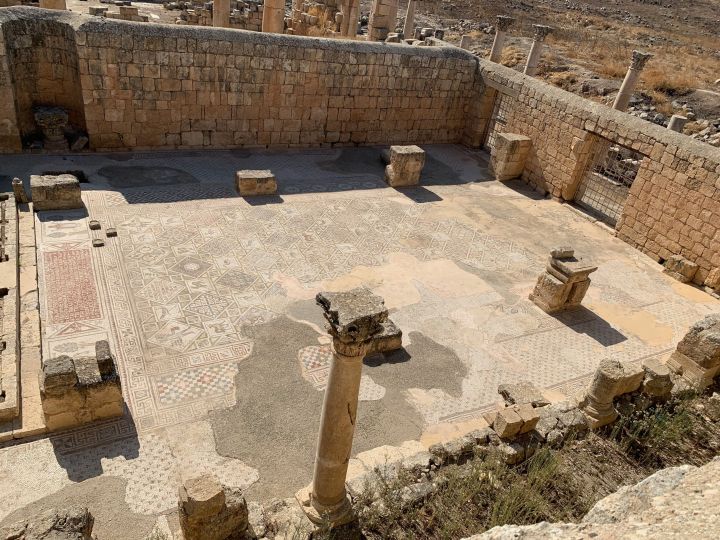
But tradition also claims this is not only Elijah’s birthplace, but also the place from which he was taken up to Heaven, according to the biblical story that describes the events that took place after he and Elisha had just crossed the Jordan River, into the east. In the Second Book of Kings, one reads:
As they (Elijah and Elisha) were walking along and talking together, suddenly a chariot of fire and horses of fire appeared and separated the two of them, and Elijah went up to heaven in a whirlwind. Elisha saw this and cried out, “My father! My father! The chariots and horsemen of Israel!” And Elisha saw him no more. Then he took hold of his garment and tore it in two.
This “rapture” explains the presence of Elijah in Jesus’ Transfiguration, and highlights the significance of Tell Mar Elias as a prominent pilgrimage destination. Luke’s Gospel (9:28-36) adds that Jesus, Moses, and Elijah were speaking about his departure (that is, Jesus’), “which he was about to bring to fulfillment at Jerusalem.” The Greek word Luke uses for “departure” in the original Greek is “exodos.” This is surely an obvious allusion to Moses’ exodus out of Egypt. Here, the author is offering a clear reading of the history of salvation as going from Moses’ liberation to that offered by Jesus.
But Tell Mar Elias is the place where Elijah also “departed.” The Book of Kings tells us the prophet did not die, but rather entered heaven alive “by fire,” “in a whirlwind,” carried away in a chariot of fire, in the place where now these byzantine ruins are found —as tradition claims. Alongside Enoch and the Virgin Mary, he is the only other biblical character taken bodily into heaven. This passage is known as “Elijah’s departure,” and is also interpreted as a prefiguration of Jesus’ own Ascension into Heaven alive, once resurrected. It makes sense Elijah and Moses are then the two characters discussing Jesus’ own “exodos” —a spiritual journey that also began in Jordan, with his Baptism.
When planning your next pilgrimage to the Holy Land, make sure you include Tell Mar Elias, Elijah’s birthplace, while walking the Jordan Trail: you can follow his path all the way to the River Jordan, where John the Baptist, “the Elijah that had to come,” baptized Jesus. Launch the slideshow below to see the historical, biblical remains of Tell Mar Elias in detail.
This content has been brought to you in partnership with the Jordan Tourism Board.

